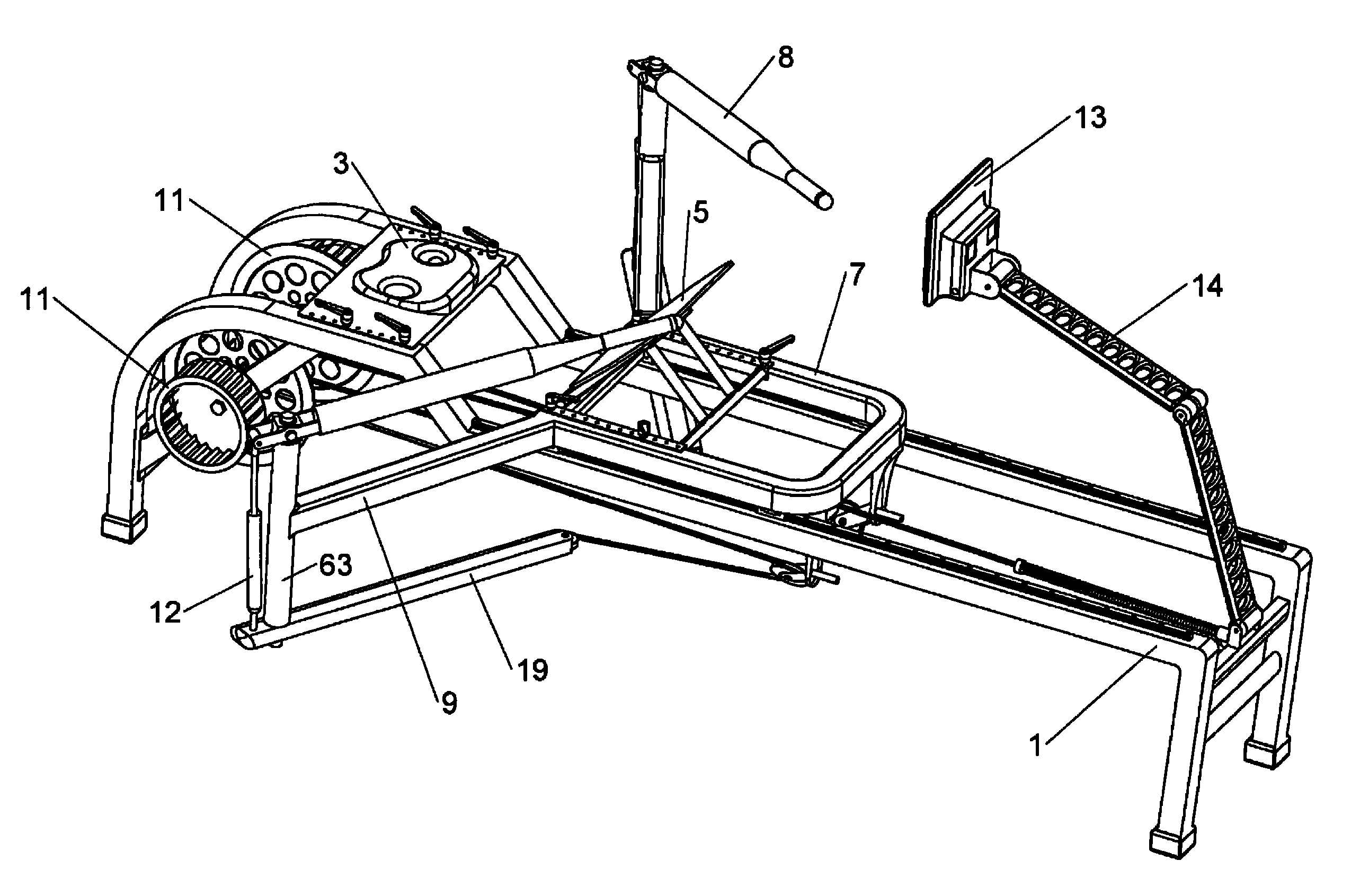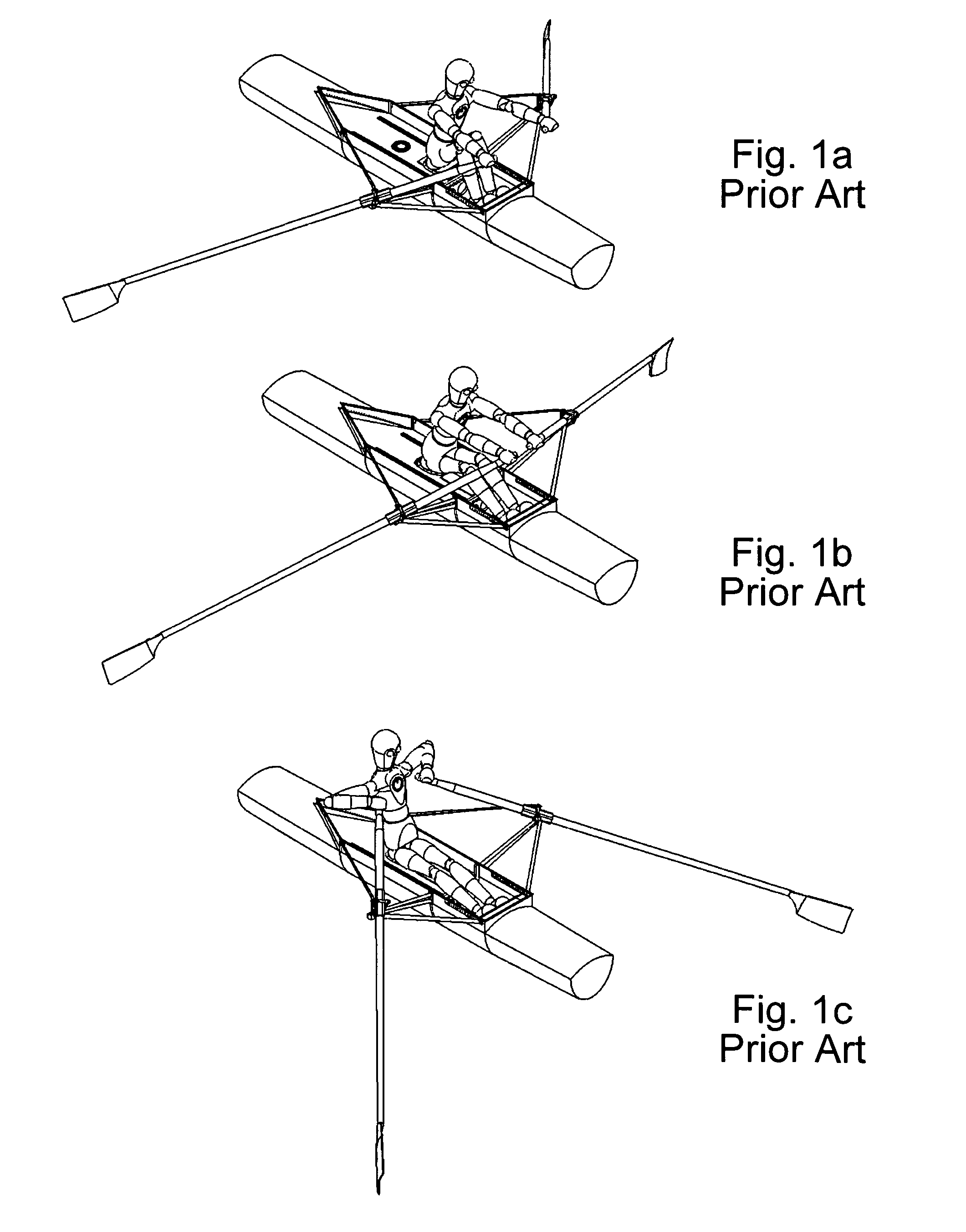Rowing trainer
a trainer and rowing technology, applied in the field of rowing machines, can solve the problem of not accurately reproducing the “feel” of the rowing boat, and achieve the effect of reducing the energy expended in the movement of the athlete's body
- Summary
- Abstract
- Description
- Claims
- Application Information
AI Technical Summary
Benefits of technology
Problems solved by technology
Method used
Image
Examples
Embodiment Construction
[0041]The present invention comprises a rowing trainer which simulates the actual experience of rowing a scull or boat.
[0042]FIGS. 1a-1c illustrate the three major stages of a rowing stroke. These stages are labeled “catch”, “drive”, and “finish”, and apply both to the prior art and to the present invention. Reference will be made, later, to these stages, in describing the device of the present invention.
[0043]FIG. 1a shows a rower in a scull or boat, in the “catch” position. In this position, the athlete's legs are compressed, and the arms are extended. The oars are about to engage the water to perform the work of rowing.
[0044]FIG. 1b shows the rower in the “drive” position. The athlete's legs are nearly extended, and the arms are beginning to bend. This is the portion of the stroke which accomplishes most or all of the work of rowing, as the oars are moved through the water, with the oar blades oriented for maximum engagement with the water.
[0045]FIG. 1c shows the rower in the “fi...
PUM
 Login to View More
Login to View More Abstract
Description
Claims
Application Information
 Login to View More
Login to View More - R&D
- Intellectual Property
- Life Sciences
- Materials
- Tech Scout
- Unparalleled Data Quality
- Higher Quality Content
- 60% Fewer Hallucinations
Browse by: Latest US Patents, China's latest patents, Technical Efficacy Thesaurus, Application Domain, Technology Topic, Popular Technical Reports.
© 2025 PatSnap. All rights reserved.Legal|Privacy policy|Modern Slavery Act Transparency Statement|Sitemap|About US| Contact US: help@patsnap.com



